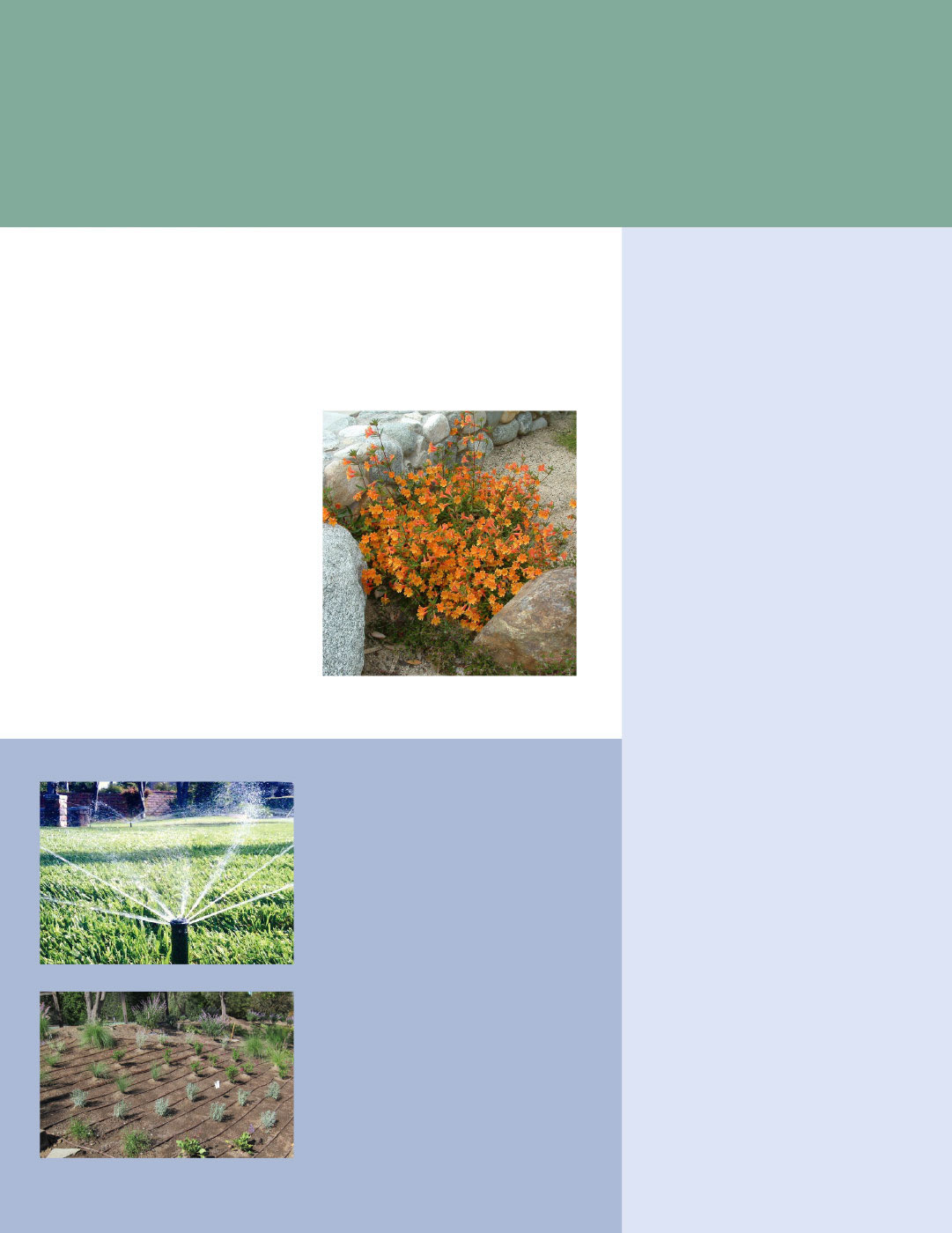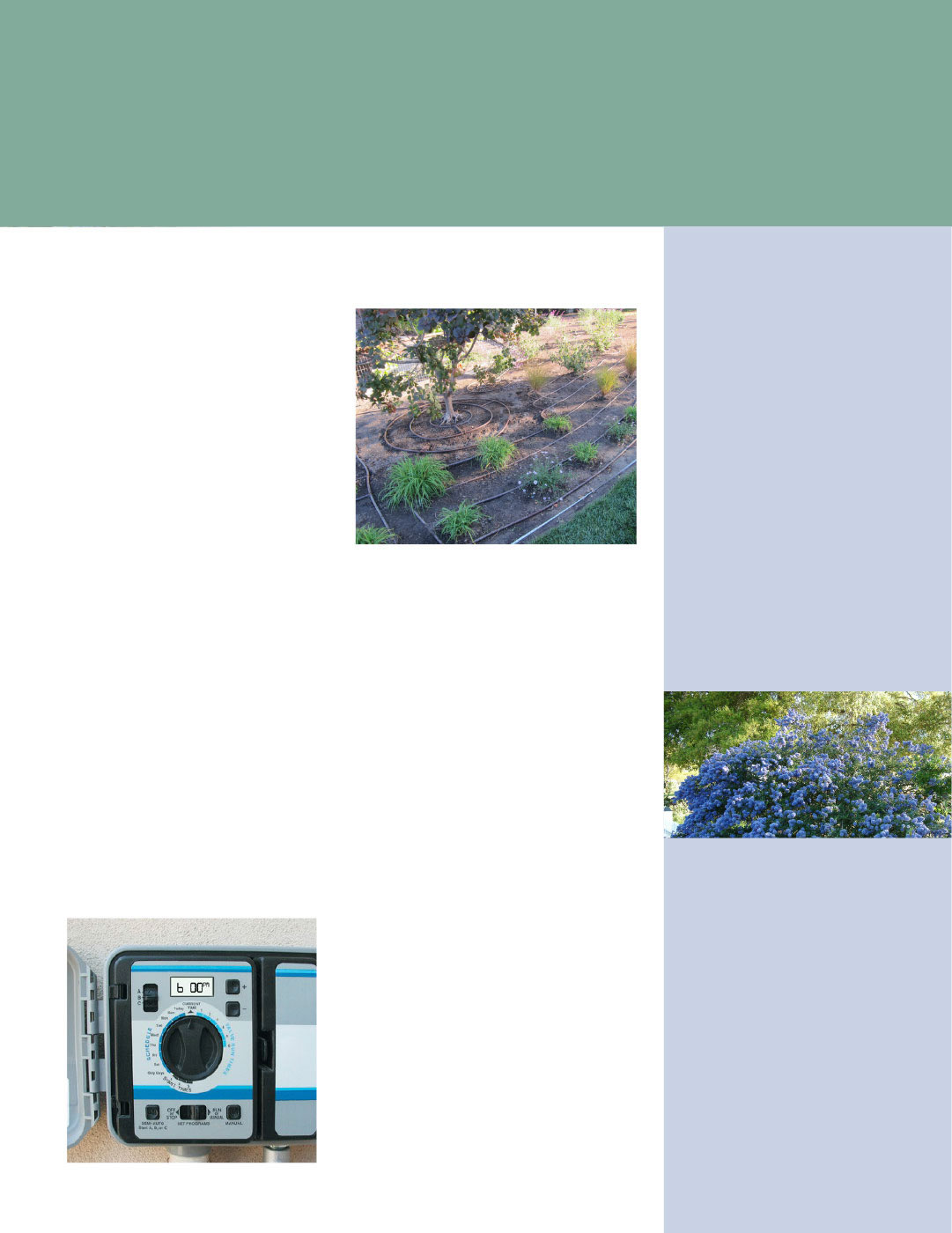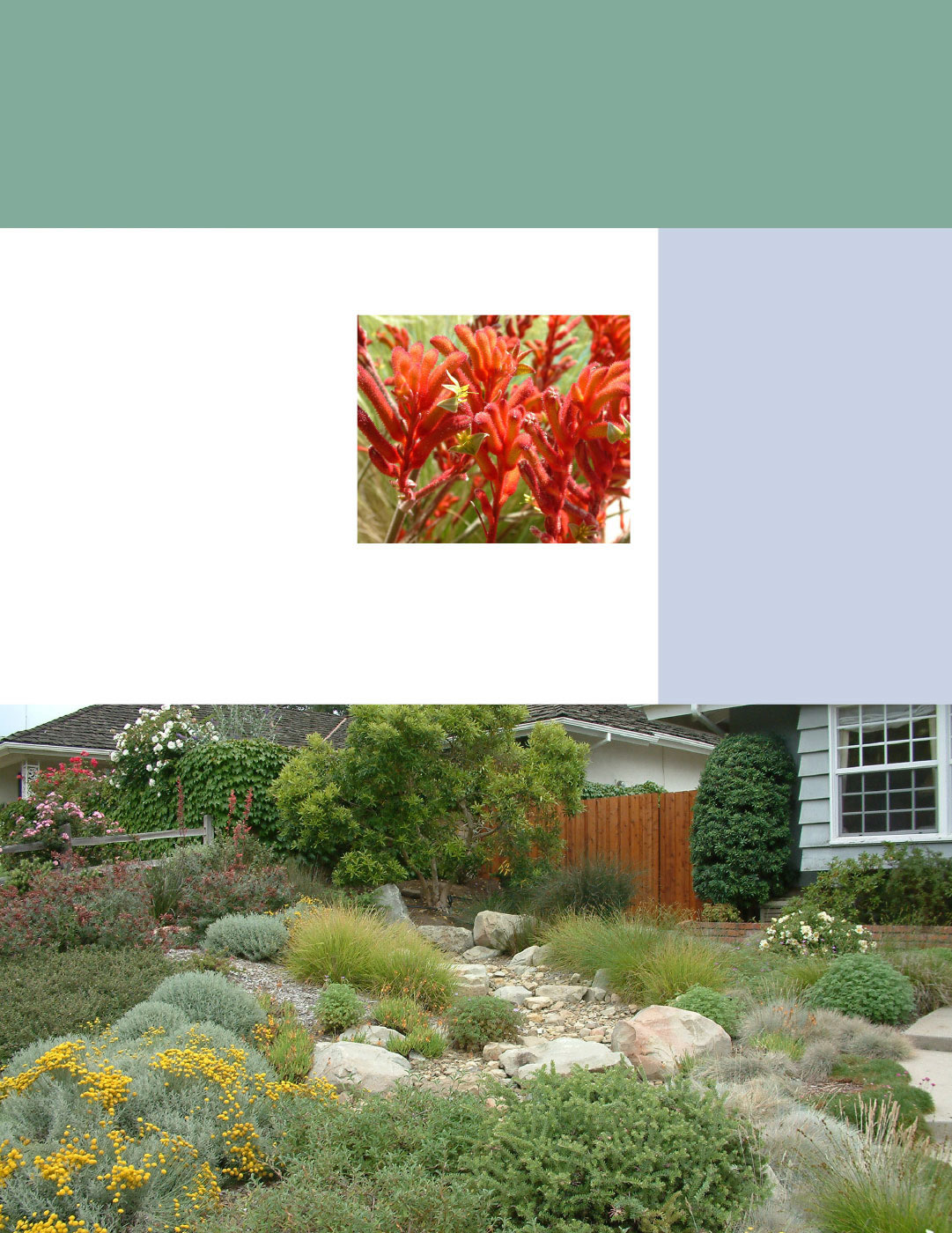
Make Your Watering
System Efficient
An efficient watering system applies the right amount of water to the right parts of the garden at the right time. This conserves water and saves you money. Watering efficiently means:
- Watering according to plant needs, soil type, and sun exposure.
- Purchasing a smart controller that only waters when it is needed based on weather patterns.
- Programming the controller you presently have to fit your needs and needs only. Turning it off when the weather permits.
- Using a modern irrigation system like stream rotors, low-flow systems like drip and micro-sprays.
- Avoiding runoff on hard surfaces like sidewalks, driveways, and decks.
- Utilizing other sustainable practices such as mulching to retain soil moisture, water-wise plant selection, and use of alternative water supplies like collected rainwater or greywater.
Know Your Plants
Water Needs
Too much or too little water can harm plants. Low water use plants include a whole range of plants from Mediterranean climates not the least of which are many of our own California natives. These plants are accustomed to getting water mainly in one season out of four. Once established, these plants will stay healthy with little water. Many plants acclimated to the shade, like ferns, will need very little extra water if they are planted in the shade but need lots of water when in sunny locations. Plants are generally grouped into Very Low, Low, Medium and High categories. Try to irrigate plants of the same water needs on the same valve. (See Hydrozones to the right)
Working with Hydrozones
Different areas of your yard may be subject to unique combinations of sun, wind, slope, and humidity conditions. A particular combination of these elements are called micro-climates. Water needs may differ from one micro-climate to another. Common examples include:
- The north side of buildings
- Shady areas under trees
- Low areas that collect water
- Sun facing areas or slopes that dry out quickly
- "Heat islands" such as landscape near pavement or concrete
The idea is to choose plants that match the conditions of the micro-climate. This may require experimentation on your part. If you plant a group of plants with similar water needs, you can avoid watering everything so that it meets the needs of the most thirsty plant in the area. A landscape area with similar water needs is called a hydrozone. If you have an automatic irrigation system, each hydrozone should be controlled by its own irrigation valve. On an electronic controller, each valve should have its own station number.
For more information on selecting waterwise plants, see the Right Plant in the Right Place fact sheet and the Additional Resources section at the end of this fact sheet.
High Water-Use Zone: Lawns, water loving plants and container plants.
Moderate Water-Use Zone: Plants needing a little water; Plants may take advantage of runoff from downspouts and patios.
Low Water-Use Zone: Established trees and plants; Requires little, if any, additional water during summer months.
No Water-Use Zone: Hardscaped (patios, decks, walkways) and established plants that can survive on rainfall only.

Know How Your Water Moves in the Soil
California's clay soils absorb water slowly, hold on to it, and deliver it over a wider area. In clay soils, water must be applied slowly and less often. Plants in clay soils watered too frequently and not allowed to dry out are especially at risk of developing diseases that thrive in moist environments. Poor water penetration prevents deep rooting, which is important for plant health. Compost and mulch can improve your soil structure so it retains more water and roots can reach deeper.
Adjust Watering Schedule
Duration: Proper watering duration depends on your soil type or texture, plant water needs, climate zone, and the season. The best way to check if water is penetrating deeply is to use a soil probe or moisture sensor. The second best way is to use a shovel. Sometimes for potted plants you can just use your finger. Soil probes are used to take samples from deep below the surface and a moisture meter can measure the moisture level at root depth. Both are available in hardware stores or nurseries. If the top layer of soil is wet and the root zone is dry, then increase the watering time with short but repeated intervals.
Watering Intervals: Divide the required watering time into multiple shorter cycles to allow water to penetrate into the soil rather than running off. If you see water pooling or running off before the total required watering time has been met, divide the total into shorter intervals, with 20 minute or longer “soak in” periods between. For example, with slow draining clay soils, a 30 minute total watering time might need to be broken into three ten-minute cycles with 20 minute “soak in” periods.
Water Your Lawn Wisely
Most people over water by a wide margin. Half the water used residentially finds its way into the gutter and storm drains due to run off. Irrigation systems are machines and require maintenance and repair. New irrigation technologies have advanced our water efficiency dramatically. Look into new rotor heads, drip systems and smart controllers. Check your irrigation system for breaks and leaks monthly and above all, change your controller based on the weather.
Use A Low Volume
Irrigation System
A modern low volume system such as drip irrigation with automatic controls makes it easy to apply the right amount of water at the right time. Drip systems apply water at or below the soil surface, so water only goes where it is needed. Installing under a layer of partially decomposed mulch prevents water waste through evaporation, run-off, and spray drift. Drip irrigation keeps pathways and unplanted areas dry and weed free. Water applied slowly and evenly throughout the root zone, promotes deeper root growth so plants are resilient to dry periods and drought.
Additional Resources:

Water Conservation Rebate Programs
Many water agencies offer generous rebates for converting irrigated turf to low water using landscape with efficient irrigation systems and rebates for upgrading to efficient irrigation hardware. Most water conservation rebate programs, require pre-approval, so do not start work before completing a qualifying pre-inspection.
Rebate programs can offset the expense of converting to a sustainable landscape and serve as an incentive for encouraging residential, institutional, and commercial customers to plant climate appropriate plants that use significantly less water than turf. Once the new landscape has been established, you will save water, energy, and money every month and see the results on your water bill!
Be sure to visit your water wholesaler or water retailer’s website for more information on water conservation rebates.
Smart Watering to Avoid
Pests & Diseases
Issue: Too much water suffocates roots and can cause diseases. Oxygen stress can lead to leaf curl and brown spots.
Solution: Water deeply, and allow the soil to dry out before watering again. This is hard to tell so don’t assume that there is not water present in the soil just because the surface is dry.
Issue: Evening watering creates moist, cool soil—the perfect conditions for snails, slugs, and many plant diseases.
Solution: The best time to water is early in the morning either just before sunrise or around that same time so that the surface of the soil will be dry.
